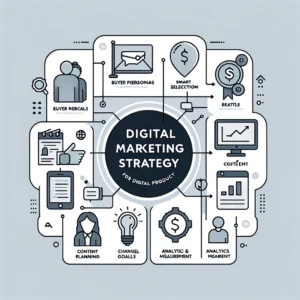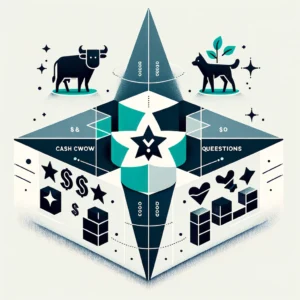Distinguishing between product development and software development is crucial, especially for experts entrenched in these fields. While they may seem similar at a glance, the nuances that set them apart are significant. This article aims to provide a deep dive into the distinct realms of product and software development. We’ll explore their histories, key processes, cultural influences, and the pros and cons of each. Understanding these differences not only helps in making informed decisions but also in appreciating the unique challenges and opportunities inherent in each domain. Let’s embark on this journey to unravel the complexities and intersections of product and software development.
Historical Context and Evolution
Early Computing and the Emergence of Software Development
The story of software development begins in the 1960s, a pivotal era in computing history. Back then, colossal computers, less powerful than today’s smartphones, were the norm. This infancy stage of computing demanded meticulous architecture and design from software engineers. Every system was meticulously broken down into reusable modules. Correcting errors was painstaking—each line of code was manually encoded into punch cards. This required extreme discipline and efficiency, laying the foundation for the disciplined nature of software development that persists to this day.
The Rise of Product Development in the Digital Age
Contrasting this, product development, as we understand it today, took shape much later. Initially, it revolved around creating physical goods, but with the digital revolution, its scope expanded to include software products. This evolution marked a shift from just writing code to developing comprehensive solutions addressing specific customer needs. Unlike the early days of software development, product development today integrates various aspects like market research, user experience design, and business strategy. It’s not just about building a product but ensuring it aligns with market demands and can evolve over time.
Historical Context and Evolution
The journey of product and software development is steeped in history, reflecting the evolution of technology and market needs. This section delves into the origins and transformations of these fields, offering a comprehensive view of how they have shaped and been shaped by technological advancements.
Early Computing and the Emergence of Software Development
Tracing back to the 1960s, the era of computing giants, software development was born out of necessity. Computers, massive in size yet limited in power, required exceptional precision in coding. Each line of code, punched manually onto cards, demanded accuracy and foresight. This era instilled a discipline in software development, emphasizing efficiency and meticulous architecture. The challenges faced by early software engineers laid the groundwork for modern software development practices, which continue to value precision and efficiency.
As technology advanced, so did the complexity and capabilities of software. The transition from mainframes to personal computers in the late 20th century opened new frontiers. Software development evolved from a task of rigorous engineering to a more accessible and creative endeavor. This shift was marked by the introduction of high-level programming languages and user-friendly interfaces, making software development more approachable and versatile.
The Rise of Product Development in the Digital Age

In contrast, product development, especially in the context of digital products, emerged as a distinct field later. Initially focused on physical goods, the advent of the digital age expanded its realm to include software products. This shift was not merely about creating new technology but about integrating it into viable products that met evolving market demands.
Product development today goes beyond the technical aspects of software creation. It encompasses a broader strategy that includes understanding market needs, user experience design, and aligning products with business goals. This holistic approach is crucial in today’s fast-paced digital market, where success hinges not just on technical excellence but also on market fit and adaptability.
The digital revolution has fundamentally transformed product development. It’s now an interdisciplinary endeavor, blending technology with business acumen, customer insights, and strategic planning. This evolution reflects a broader trend in technology: the move from purely technical challenges to complex, multi-faceted problems that span across disciplines.
Defining Product Development
Product development, particularly in the digital realm, is a multifaceted process that goes beyond the conventional boundaries of software engineering. It encompasses not just the creation of a product but its entire lifecycle, from conception to market release and beyond.
The Concept and Scope of Product Development
Product development in the digital age is an intricate process, blending technical prowess with market insight. It’s about understanding and anticipating the needs of the target audience, ensuring that the end product is not just technologically sound but also marketable and user-friendly. This process involves a series of steps, each critical to the overall success of the product.
Key Steps in Product Development
- Requirement Analysis: This initial phase involves deep market research and understanding the target audience’s needs. It’s about identifying the core functionality that the product must have and the additional features that can set it apart in the market.
- Quality of Code: The technical quality of the product is paramount. This step ensures that the code is robust, scalable, and maintainable, laying a strong foundation for the product’s future development and updates.
- Technology Stack: Choosing the right technology stack is critical for future-proofing the product. It involves selecting the appropriate tools and platforms that are not only relevant today but can adapt to future technological advancements.
- User Adaptability: This step focuses on making the product accessible and user-friendly to a wide range of users. It involves designing intuitive interfaces and ensuring that the product is adaptable to different user needs and environments.
- Price Setting: The final step involves pricing the product. It’s a complex process that balances the cost of production with market demand and competitive pricing strategies. This step is crucial for ensuring the product’s market success and profitability.
Detailed Exploration of Key Steps in Product Development
- In-depth Requirement Analysis: This phase is not just about identifying what the product should do but also about understanding the ‘why’ behind it. It involves engaging with potential users, stakeholders, and market research to map out detailed user personas and use cases. This process helps in crafting a product that not only meets but anticipates the needs and expectations of its target audience.
- Ensuring High-Quality Code: Quality in code is multi-dimensional, encompassing reliability, efficiency, and maintainability. This step requires rigorous testing protocols, code reviews, and adherence to best practices in software engineering. The goal is to create a codebase that is not only bug-free but also scalable and adaptable to future enhancements and integrations.
- Strategic Technology Stack Selection: The choice of technology stack can make or break a product’s future. It involves evaluating current tech trends, considering the scalability of technologies, and assessing their compatibility with the product’s long-term vision. The decision here affects everything from development speed to future maintenance and scalability.
- Enhancing User Adaptability: This involves creating a user-centric design that is intuitive and responsive to a diverse user base. It encompasses usability testing, user feedback loops, and iterative design processes to ensure that the product is not just functional but also enjoyable and easy to use.
- Comprehensive Price Setting Strategy: Pricing is a strategic decision that involves understanding the competitive landscape, the perceived value of the product, and the business’s financial goals. It’s about finding the sweet spot where the price reflects the value provided to the users and aligns with market expectations, while also ensuring business viability.
Understanding Software Development
Software development, at its core, is a systematic process of creating, testing, deploying, and maintaining software. It’s a discipline that combines elements of computer science, engineering, and project management to produce software that meets specific requirements or solves a particular problem.
Software Development: An Overview
Software development is more than just coding; it’s about creating solutions that are efficient, reliable, and scalable. It involves a deep understanding of algorithms, system architecture, and user requirements. The process is typically iterative, allowing for continuous improvement and adaptation.
Core Phases in Software Development
- Requirement Analysis: Similar to product development, software development also begins with understanding the needs. However, the focus here is more on the technical aspects and functionality required to solve a particular problem or perform specific tasks.
- Designing and Prototyping: This phase is about turning the requirements into a workable design. Prototypes are often developed to visualize how the software will function and to test its feasibility.
- Function and Product Support: Developing software that is compatible with different systems and platforms is a key challenge. This step ensures that the software can integrate and function seamlessly with existing products or systems.
- Testing: Rigorous testing is essential to ensure that the software performs as intended. This includes various types of testing like unit testing, integration testing, and user acceptance testing.
- Documentation and Maintenance: Proper documentation is critical for ongoing maintenance and future development. Software development is an ongoing process, requiring regular updates and maintenance to ensure relevance and effectiveness.
Comparative Analysis: Product vs Software Development

In this section, we’ll conduct a comparative analysis, outlining the main differences, pros, and cons of product development and software development.
Similarities and Differences
While both product and software development involve creating solutions to meet user needs, their approaches, objectives, and outcomes differ significantly. Product development is broader, encompassing market research, user experience, and business strategies, while software development focuses more on the technical creation and functionality of the software.
Pros and Cons of Each Approach
- Product Development Pros:
- Holistic approach considering market and user needs.
- Potential for higher market impact and profitability.
- Emphasis on user experience and design.
- Product Development Cons:
- Can be more resource-intensive and time-consuming.
- Requires constant market analysis and adaptation.
- Higher risk due to broader scope and market variables.
- Software Development Pros:
- Focused on technical excellence and functionality.
- Often quicker to develop specific software solutions.
- Can be more straightforward with a clear technical scope.
- Software Development Cons:
- May lack broader market perspective.
- Risk of becoming obsolete if not aligned with market trends.
- Often requires further adaptation for market viability.
The Role of Culture in Development Processes
The culture surrounding product and software development plays a significant role in shaping the methodologies and outcomes of each. This section examines how cultural factors influence these two domains.
Cultural Differences in Software and Product Development Teams
In software development, the culture often focuses on technical prowess, innovation, and problem-solving within a specific scope. Teams are driven by the challenges of coding and system architecture. In contrast, product development culture is more interdisciplinary, emphasizing collaboration across various domains such as marketing, design, and user experience. This diversity in team composition and goals leads to different approaches and priorities in the development process.
Impact of Culture on Development Outcomes
The cultural orientation of a development team significantly impacts the final product. Software development teams, with their tech-centric culture, excel in creating technically sound and innovative solutions. However, they might overlook broader market trends or user preferences. On the other hand, the inclusive and market-oriented culture of product development teams ensures that the end product is not only technically efficient but also aligns with user expectations and market demands. Understanding these cultural dynamics is crucial for organizations to align their development strategies with their business goals and target markets.
The Role of Culture in Development Processes
Culture is a critical but often overlooked aspect in the realms of product and software development. It’s like the underlying current that shapes how teams think, collaborate, and ultimately, how they create products or software.
Diving Deeper into Cultural Influences
- Software Development Culture: Here, the atmosphere is typically tech-focused. Teams are usually made up of individuals who are passionate about coding and technology. This creates an environment where technical challenges are embraced, and innovative solutions are sought. However, this strong focus on technology can sometimes lead to a narrow view, missing out on broader market needs or user experiences.
- Product Development Culture: This culture is more diverse. Teams often include not just tech experts but also professionals from marketing, design, and user research. This mix leads to a richer perspective where the product is not just about the technology but also about how it fits into the market and user lives. The downside? This approach might be slower and more resource-intensive, as it involves balancing multiple viewpoints and objectives.
The Real-World Impact
- In Software Development: The culture leads to robust and technically advanced software. But there’s a risk: if teams are too inward-looking, they might miss out on what users really want or need.
- In Product Development: The broader perspective ensures products are user-friendly and market-ready. However, this can mean more time and resources spent in aligning different areas like market research, design, and technology.
Future Trends and Predictions
As we look towards the future, both product and software development are poised to undergo significant transformations, driven by emerging technologies and evolving market demands.
Anticipated Changes in Product and Software Development
- Integration of AI and Machine Learning: Both fields are likely to see increased integration of AI and machine learning, automating certain aspects of development and enabling more personalized user experiences.
- Increased Focus on User Privacy and Security: With growing concerns about data privacy, both product and software development will need to prioritize secure and ethical data practices.
- Adaptation to Remote and Distributed Work: The rise of remote work will influence development processes, requiring more collaborative and flexible tools and methodologies.
- Sustainable and Ethical Development: There will be a greater emphasis on sustainability and ethics in development, reflecting broader societal shifts towards responsible technology use.
- Emergence of New Technologies: Technologies like blockchain, augmented reality, and the Internet of Things (IoT) will open new avenues for innovation in both domains.
Evolving Technologies Shaping Future Developments
The constant evolution of technology means that both product and software developers will need to stay agile and adaptable. Keeping pace with these changes will be crucial for staying relevant and competitive in an ever-evolving digital landscape.



